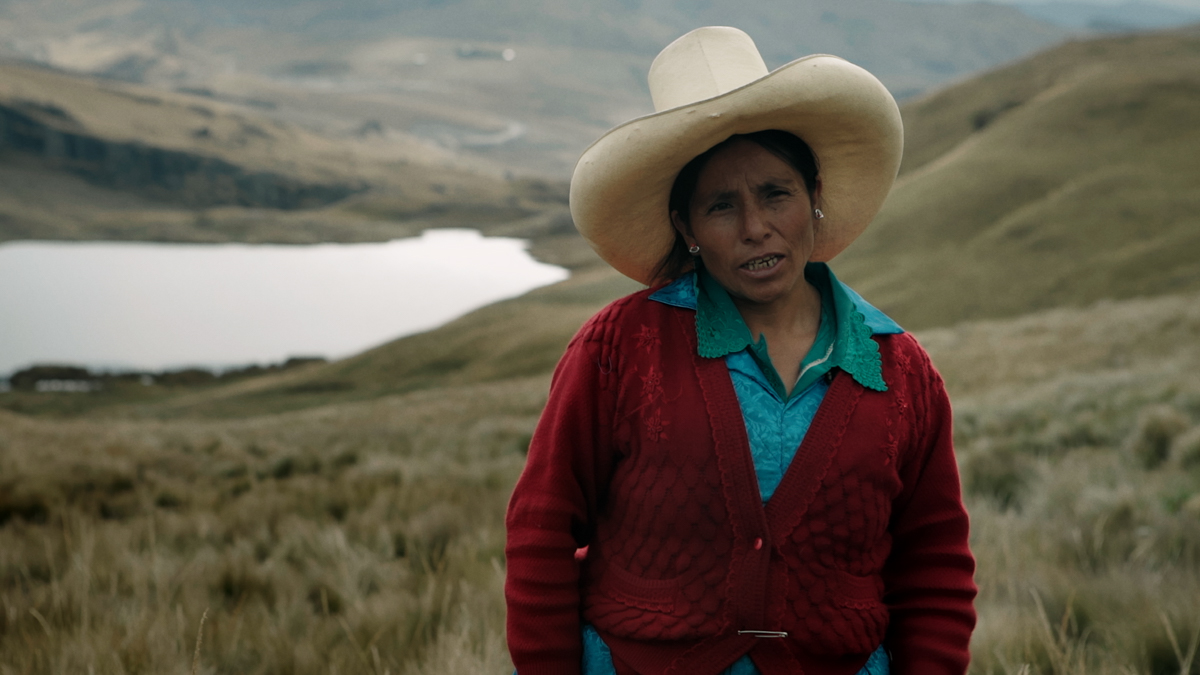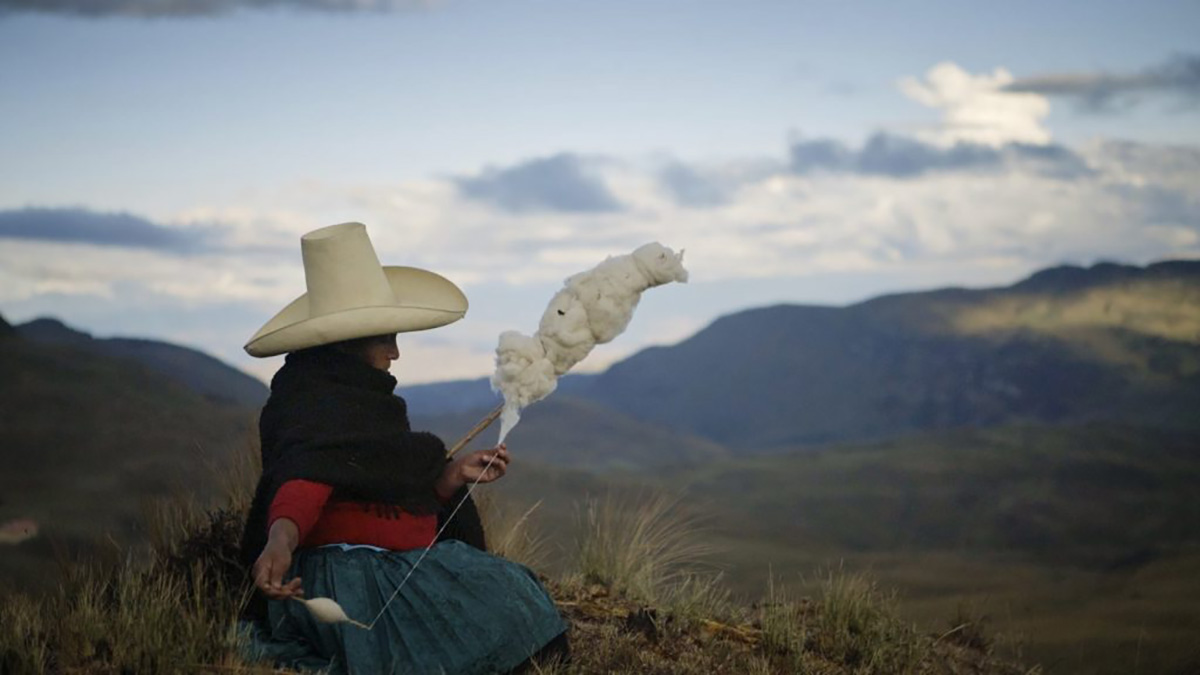“As of now, the patriarchy controls storytelling and most films are made from a white…
MAXIMA (2019) Documentary
Not Just a Revamped Version of Hollywood’s Erin Brockovich2 April 2020
For me, the best bit about going to the cinema has always been the journey home. The noisy tube trips spent squabbling with friends over our favourite characters; the forensic dinners afterwards, devoted to analysing onscreen chemistry; and the chilly walks home, agonising over an unjust ending. And then, occasionally, there are films that leave me quiet, stunned into a strange sort of silence the whole way back. MAXIMA, director Claudia Sparrow’s first feature film, belongs in this final category.
MAXIMA details the incredible, and true, story of Maxima Acuña; a Peruvian farmer who finds herself trapped in a land-battle against Newmont, the world’s largest gold mining corporation. The historic and rightful owner of a large plot of Andes mountainland, Acuña is forced to defend both her property and life, as Newmont announce their multi-billion dollar plan to mine the land she calls home. Unwilling to render her land into nothing more than desert and dust, Acuña stands firm against Newmont; “I was born in the fields,” she tells a rally of protestors, “and I will die in the fields.”
What follows is a gruelling David and Goliath tale, as Acuña is relentlessly attacked by Newmont for well over a decade. They storm her land with armed police, physically assault her daughter, run over her dog. When Acuña eventually presses charges, and wins (in a brief moment of justice in this otherwise cruel tale), Newmont appeal the court order, resulting in a battle between the corporation and the individual. “They [Newmont] are an elephant,” Acuña is told, as she begrudgingly prepares for a lifetime of fighting, “[and] you are an ant.”

MAXIMA promises to move and inspire, but what I had not expected was to laugh. Amidst what is otherwise a wholly superhuman tale, Acuña’s own warmth and wit whistles through the plot as an extraordinarily humanising force. Whether she is bickering with her husband over shearing sheep, or fielding incessant reporters’ questions with deadpan stares, Acuña manages to find lightness in the heaviest of situations. “Is it bad that I have my hat on?”, a coy Acuña whispers to her barrister at the start of a climactic courtroom scene. “Maybe you should take it off,” comes the reply, as Acuña scans the suit-filled room, shrugs, and plops her wide-brimmed sombrero on the floor.
Handled by a less sensitive director, there are moments where this fish-out-of-water narrative could have been reduced to nothing more than clumsy cliche. It is easy to imagine scenes where Acuña pounds the busy Washington streets in her traditional Peruvian dress being played for laughs. Thankfully, Sparrow, herself a Peruvian-born director, steadies the storyline with nuance and sincerity. Acuña’s trip to DC is a pivotal moment in her battle against the mining authorities, and Sparrow treats it as such. The direction is powerful and persuasive; with lingering shots of a steely-faced Acuña eyeing-up the supreme court building still etched in my memory.

In fact, even if the story itself wasn’t so remarkable, MAXIMA would still derive power from its visuals alone. Part documentary, part aesthetic feast, Sparrow wastes no frame in her 88 minutes of screen-time and the result is a breathtakingly filmed piece of cinema. I sometimes worry that the impact of sweeping landscape shots has been deadened by hordes of YouTubers with drones, but in MAXIMA this sort of ‘epic’ cinematography is both necessary and effective. As Sparrow’s lens settles on the landscapes of Peru, we are reminded of the overwhelming magnitude of nature, and Acuña’s bold mission to protect it.
Indeed, there is much to marvel at in MAXIMA. Alongside its fast-paced narrative and impressive visuals, the film raises serious questions about environmentalism and intersectionality. It is strange that a movement so uniquely universal as environmentalism tends to be associated with largely white, often privileged, activists. MAXIMA stands as an important reminder that environmentalism extends far beyond the watered-down version portrayed in Western mainstream media: it is more than just replacing plastic straws for bamboo ones and shunning air travel.
A large part of me was expecting, wishing, for MAXIMA to have a happy ending. After all, the plot is so extraordinary it’s easy to forget that MAXIMA is not just a revamped version of Hollywood’s Erin Brockovich. As Acuña’s courtroom victories piled up, media attention flooded in, and environmental awards were won, I eagerly awaited a triumphant closing sequence in which Acuña waved goodbye to her mining nemeses and peacefully walked off into the distance.
Instead, I found myself quietly leaving the cinema, agonising over Acuña, who is still alive and still suffering. Newmont may have lost the legal battle, but that has not curbed their constant attacks on Acuña. A scene near the end of the film shows a weary Acuña carrying her market-bought vegetables back home. Sighing, Acuña explains that the crops she grows herself are still regularly dug up and destroyed by Newmont. It is an unsatisfying and cruel finish, but to sugarcoat the end of MAXIMA would be to diminish the reality of Acuña’s, and many others’, relentless battle.
To learn how you can support Máxima Acuña, click here // Extra thanks to the Berlin Feminist Film Week for allowing us to screen this documentary. To read our article about 2020’s Berlin Feminist Film Week, click here.








